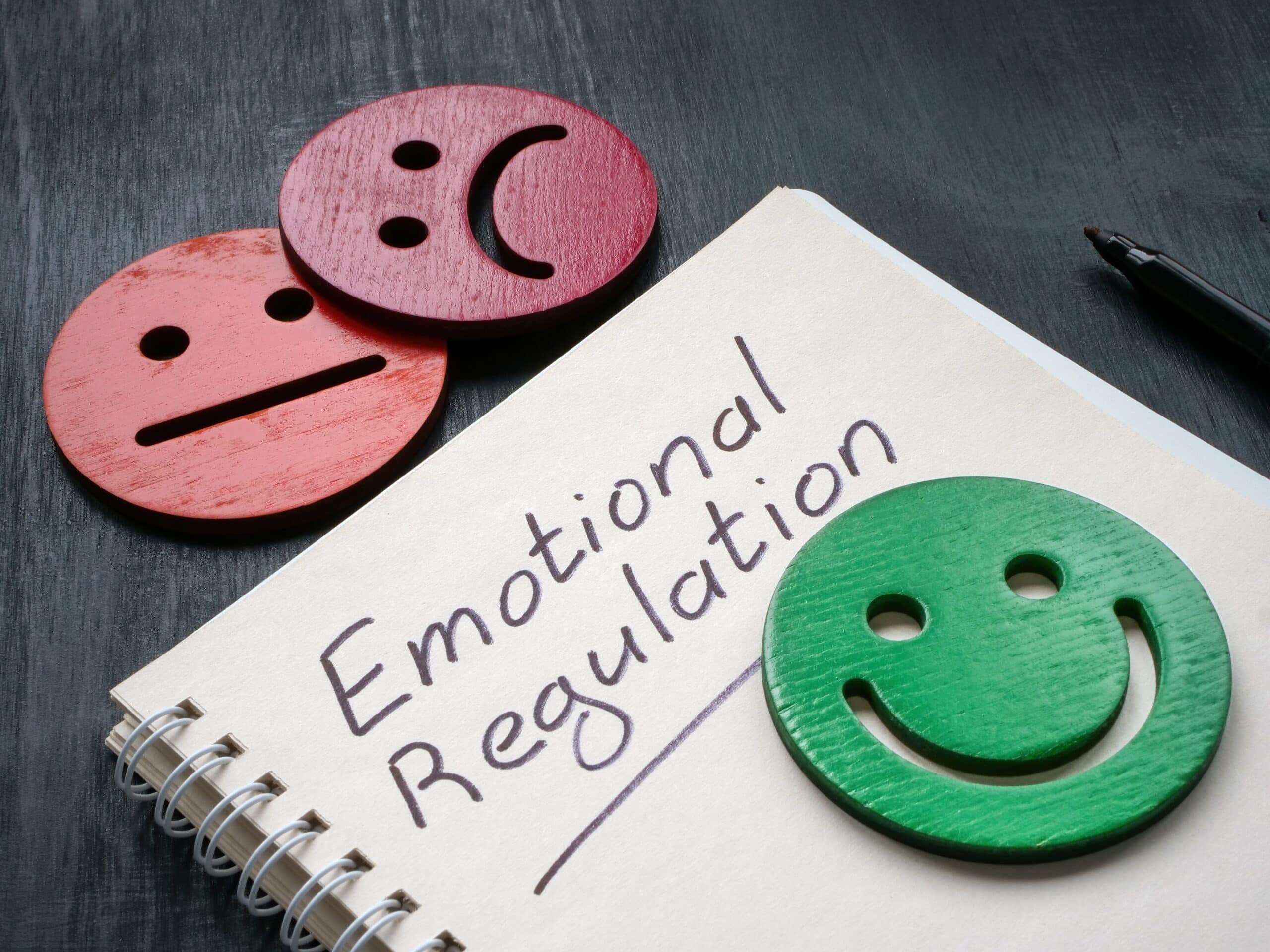admin — 03 January 2024
Emotional regulation skills are vital for leaders, and they include self awareness or mindfulness, naming the emotion, time out, deep breathing, identifying triggers, reappraisal or taking different perspectives to turn negative into positive emotions.
Summary: Emotional regulation is the range of attitudes and behaviors we use to manage our emotional state and respond to situations in the world around us. Bringing emotional regulation skills into the workplace helps leaders guide their teams to optimal results in stressful circumstances.
What is emotional regulation?
Emotions are natural, normal, and healthy. How we respond to our emotions can vary widely, from person to person and from situation to situation. Learning to respond to our emotions to create better outcomes is at the heart of emotional regulation.
Emotions aren’t confined to our private lives, of course. We take them with us to work, where they can mix with stress and deadlines to cause us to respond in less than optimal ways.
Leaders have extra layers to contend with. They bear the weight of ensuring the performance of a group, while their emotional states can directly impact both their own group and the wider organization. Leaders need to find positive ways of channeling their emotional responses to get the best from their teams. As we discussed before, people skills are leadership skills.
Let’s first take a look at ways of developing emotional regulation.
Strategies for developing emotional regulation
Some people seem to have a direct connection to how they’re feeling from moment to moment. Others aren’t so in tune and may experience a jumble of feelings they can’t explain. Most are probably in the middle, with some insight into how they’re feeling but only a little beyond that.
To develop emotional regulation, the first steps are to become aware of what we’re feeling and why we’re feeling that way. Here are some suggestions to get in touch:
Pay attention to your body. Strong emotions lead to physical reactions. Fear and anxiety lead to the release of stress hormones that can increase blood pressure, heart rate, and breathing. Stop and pay attention. What clues is your body giving about your emotional state?
Name the emotion. The next step is to give your feelings a name. More than a single emotion may be in play at any moment. Giving names to emotions is the first step toward developing the self-awareness that leads to emotional regulation.
Give yourself time. Emotions take time to process. It’s okay to take a break or disengage from a stressful situation to collect yourself. Deep breathing can also be helpful. Taking a few moments to control your breathing can help calm your body and improve emotional regulation.
Identify your “triggers.” The word “trigger” has been overused, but the concept is useful. We are each the product of our individual experiences, and our emotional reactions are intertwined with those experiences. As we learn to identify our emotions, we can also learn what kinds of situations and stressors tend to prompt those emotions.
Reappraisal – a key to taking action
Becoming aware of our emotions is just the first step. How do we respond? People generally adopt one of two strategies for emotional regulation, suppression and reappraisal.
Suppression causes us to ignore our emotional state and act as though everything is fine. Suppression is associated with negative outcomes like having fewer positive emotions, lower self-esteem, and feelings of inauthenticity.
Another strategy for emotional regulation is reappraisal. Reappraisal is a change in the way we interpret situations. According to the Harvard Business Review, it can be an effective tool for emotional regulation in the workplace.
In the article linked above, the author gives the example of a soccer coach whose team missed a point just before halftime. The team is frustrated and disappointed. The coach could (1) ignore their emotions, (2) impulsively vent his own rage and frustration, or (3) reframe the situation through reappraisal.
Choosing reappraisal means seeking different perspectives to realize a positive outcome. The team is only down by a point. There is still another half to play. There are more games in the season.
In the business context, reappraisal often means reframing a perceived threat into a challenge to be overcome.
Threats lead to fear and defensiveness, but challenges call for action and resilience. By reframing the situation, the leader can change not only the team’s reaction but the underlying emotion as well.
We bring our emotions to work, both positive and negative. To achieve the best results, leaders need to develop their own emotional regulation skills and relationship intelligence, and set the tone for others. When leaders lead themselves and team members take proactive steps toward positive results, everyone and the whole organization benefit. This is particularly true in the age of AI where many leaders tend to prioritize data skills over people development.
Copyright ©️ 2024 by Mike Pelfini. All rights reserved.
ForeMeta offers breakthrough leadership coaching to develop CEO self-leadership and leading teams and organizations. We offer both individualized coaching or group coaching to help leaders and their people achieve greater success. If you would like to learn more about emotional regulation in the workplace, please contact us.


